
Long after the wooden structures, houses, barns and out buildings comprising the farms and plantations of the 1700s and 1800s are gone, all that often remains are the hardened gravestones and iron fences marking the spot where the owners and family members are buried and laid to rest. This is the case with the White Plains Cemetery, resting place of Nathaniel Jones, his first and second wives, and seven of his children.
Besides being the owner of 10,000+ acres of land in what would become eastern Cary, Jones (1749-1815) was a Revolutionary War Patriot and served as a Wake County Commissioner, Justice of the Peace, Sheriff, Clerk of Court, member of the General Assembly and delegate to the Constitutional Convention in Hillsborough in 1788. Learn more about Nathaniel Jones.
Descendant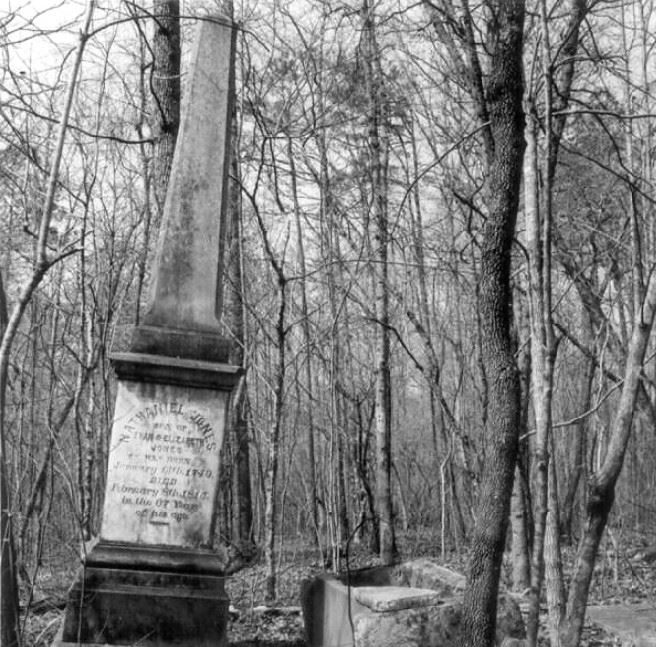 s of the Nathaniel Jones family visited the cemetery in 1971 during the Town of Cary's centennial celebration. They made their way through the woods that would one day become the Maynard Oaks neighborhood and found the neglected cemetery on a small plot that would one day be situated on Tolliver Ct. in that neighborhood. The Cary Historical Society was formed in 1974 and although there was interest then in conserving the obelisk that marked Nathaniel's burial spot and the box tomb that marked that of his second wife, Rachel Perry Jones, it wasn't until 1986 that Town of Cary staff worked with the Historical Society and Sunsouth Homes, Inc. (the developers of Maynard Oaks and the owners of the cemetery at the time) to put together a proposal to conserve them.
s of the Nathaniel Jones family visited the cemetery in 1971 during the Town of Cary's centennial celebration. They made their way through the woods that would one day become the Maynard Oaks neighborhood and found the neglected cemetery on a small plot that would one day be situated on Tolliver Ct. in that neighborhood. The Cary Historical Society was formed in 1974 and although there was interest then in conserving the obelisk that marked Nathaniel's burial spot and the box tomb that marked that of his second wife, Rachel Perry Jones, it wasn't until 1986 that Town of Cary staff worked with the Historical Society and Sunsouth Homes, Inc. (the developers of Maynard Oaks and the owners of the cemetery at the time) to put together a proposal to conserve them.
Important Information Recorded by Two Cemetery Surveyors
In the meantime, Ann Burns and Irene Kittinger recorded the cemetery in 1981 for the Wake County Cemetery Survey Project and made a return visit in 1982. As they described, the slab atop Rachel's box tomb was no longer intact and Nathaniel's obelisk was leaning. Six or seven plain marble markers were counted inside the cemetery and five slender unmarked stones were found. The foundation was still there for what once held a wall, or perhaps an iron fence, but the fence was gone.
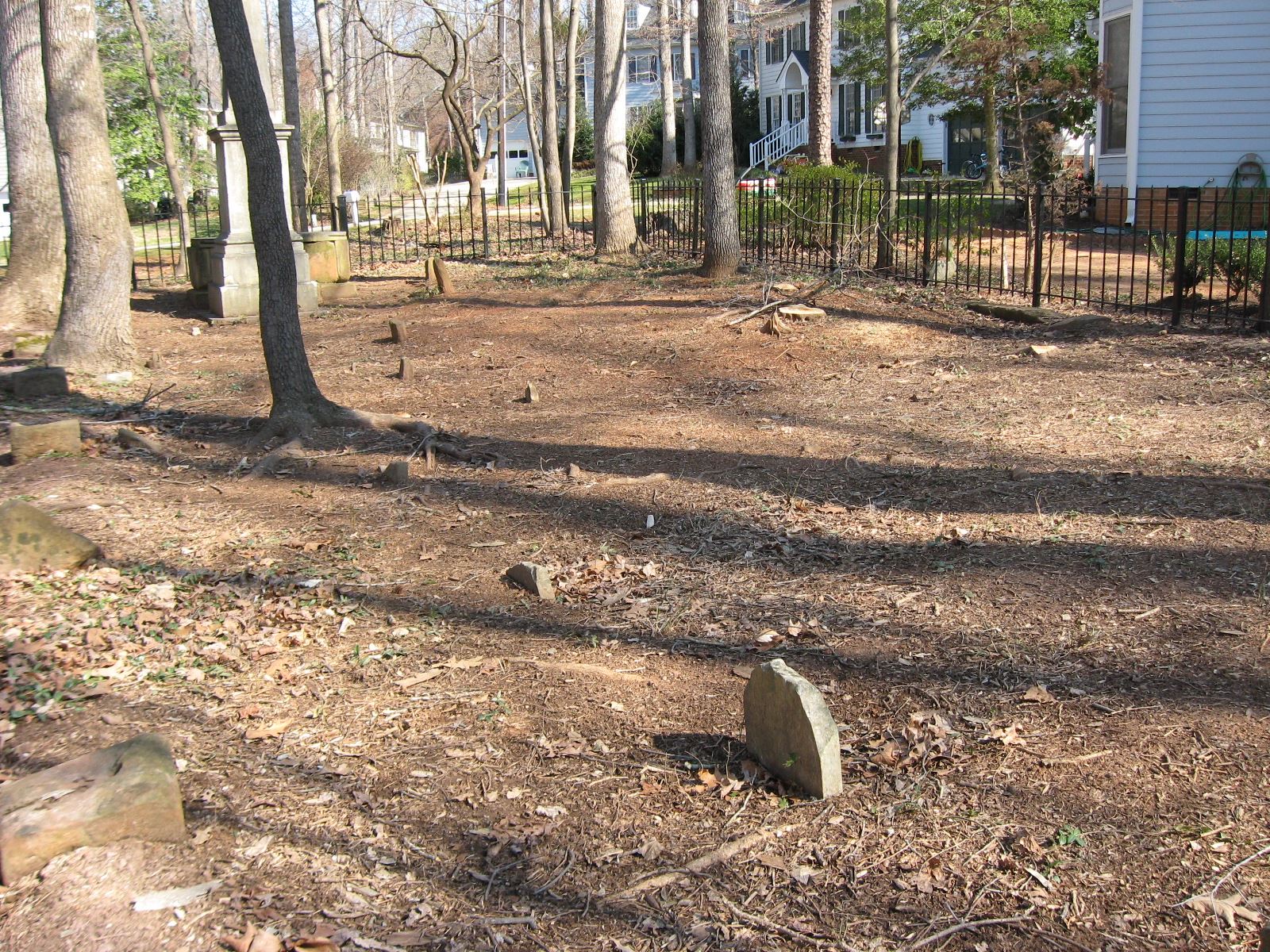
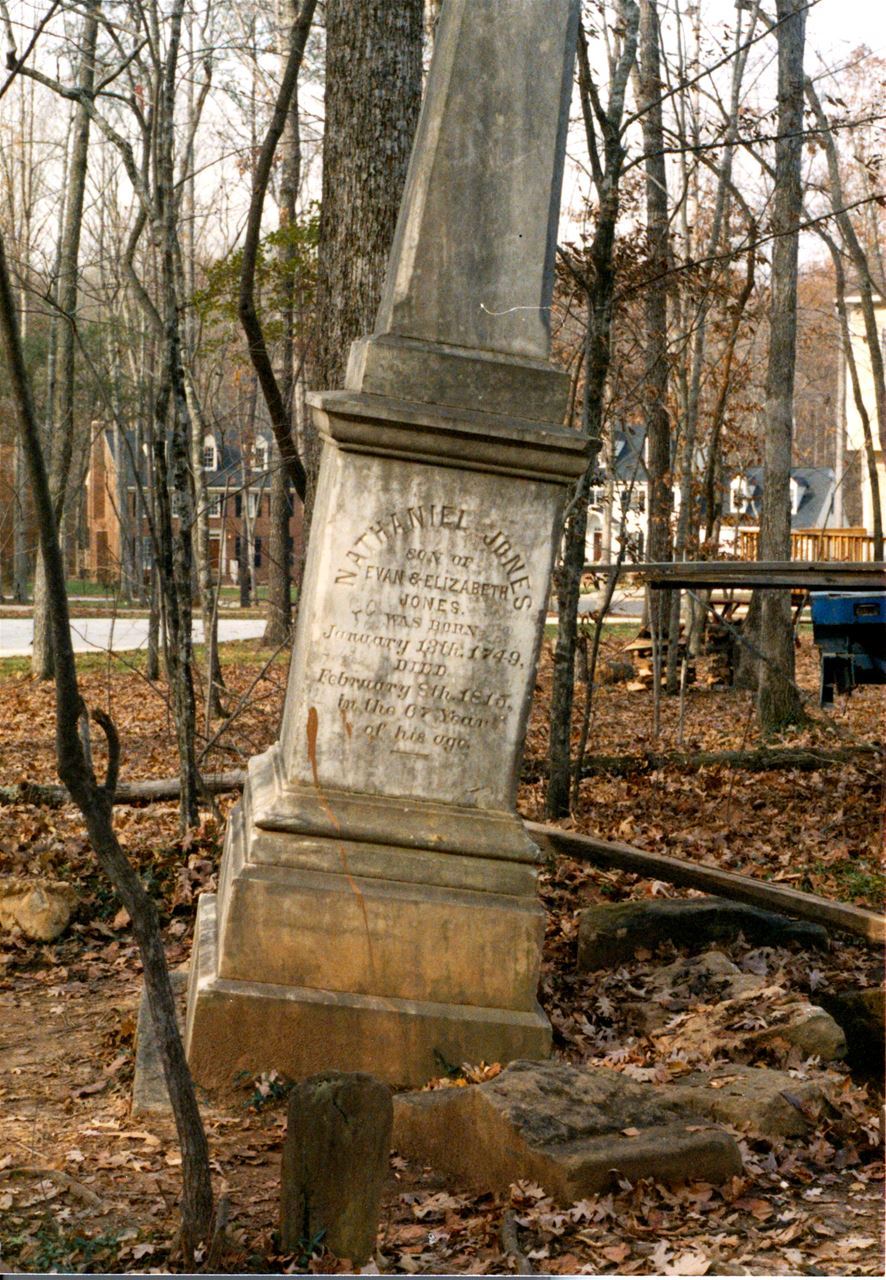

In 1983, Ann and Irene visited two sisters who were third great granddaughters of Nathaniel Jones of White Plains and Nathaniel Jones of Crabtree, and who provided a Bible record of Nathaniel Jones of White Plains and a copy of typed family records. These sources, along with obituaries, provided the information to determine who was buried in the White Plains Cemetery along with Nathaniel and Rachel. Keep in mind, with the exception of Nathaniel's obelisk and Rachel's box tomb, no gravestones in the cemetery bore any legible writing. But with the obtained information, it was determined that Nathaniel's first wife, Millleson Blanchard Jones, was also buried in the cemetery. She died three days after the birth of one of their children. Two of their other children are also buried in the cemetery; both died young, one at age 7 and one at age 2. These two young children both died during the same year, 1780, and are the first members of the family to be buried in the cemetery. The remaining graves contain five of Nathaniel and his second wife Rachel's children, ranging in age from 34 to 76.
Before the Cape Hatteras Lighthouse, there was the Nathaniel Jones Obelisk
In June 1987, the Cary Historical Society engaged David C. Fischetti, P.E. (who went on to play a significant role in the relocation of the Cape Hatteras Lighthouse) to provide an assessment of the Nathaniel Jones obelisk, with an action plan for the obelisk's stabilization and conservation. An archaeological study of the cemetery was completed by the N.C. Office of State Archaeology. The Town of Cary and the Cary Historical Society, with support from the Friends of the Page-Walker Hotel, donated funds for conservation work on Nathaniel Jones’ obelisk. They also erected an iron replacement fence around the gravestones. In addition, they restored the collapsed sides of Rachel Perry Jones’s box tomb and covered it with a temporary stone top because the original ledger stone had been displaced and was in pieces scattered throughout the cemetery. The conservation work was completed in 1989 and Sunsouth Homes deeded the site to the Town.

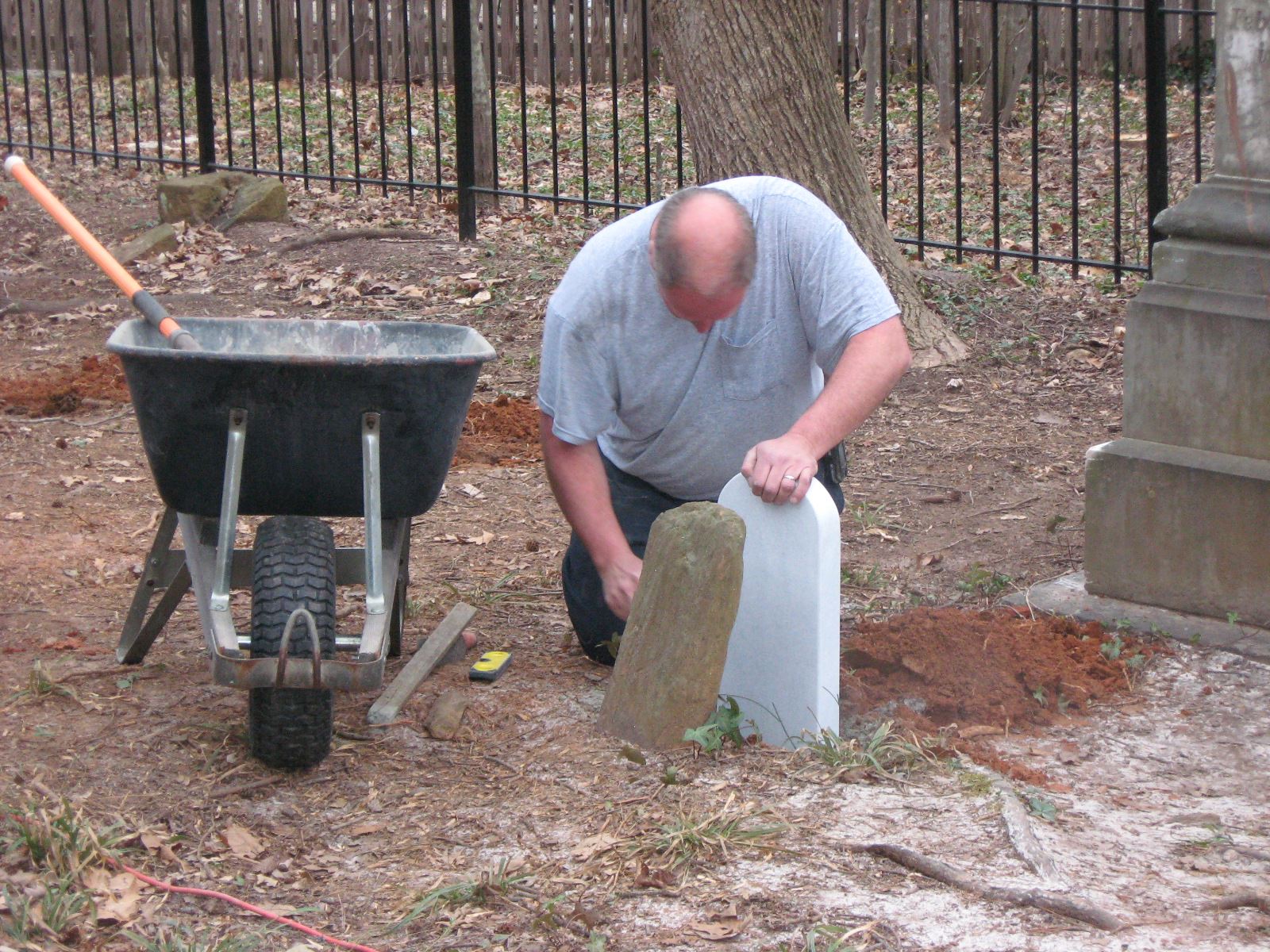
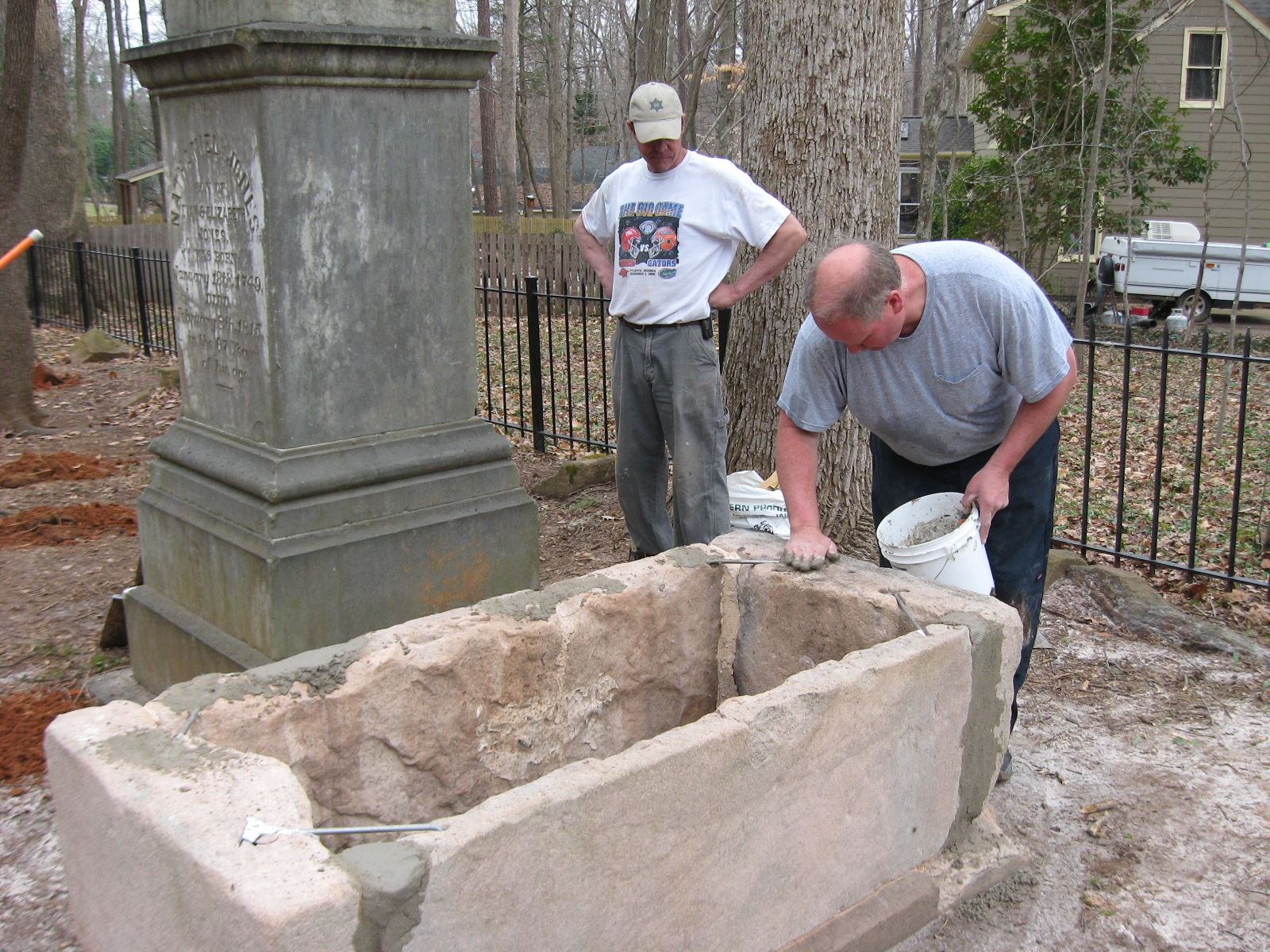
In 2009 - 2010, with funds donated by the Cary Historical Society, the Town and the Friends of the Page-Walker Hotel installed a permanent granite ledger stone for Rachel's box tomb. The ledger stone was engraved with the original inscription, having been recorded in February 1981 by Ann Burns and Irene Kittinger before the original ledger stone was broken into pieces and eventually lost. They also added small marble tablets behind four unadorned fieldstone head markers, behind one unadorned marble foot marker, behind three damaged marble head markers that are missing sections bearing the deceased's attributes (name, date of birth, death of death, epitaph, etc.), and at the head of the one unmarked grave. In addition, they installed an interpretive sign outside the fence. The fieldstones and damaged marble tablets are original to the cemetery and its period of significance. The nine new marble tablets are approximately 2-feet tall, and are comparable to the height of the fieldstones and the lower section of the original marble tablets that mark the various burial locations.
Family Descendants Return to Find Restored Cemetery
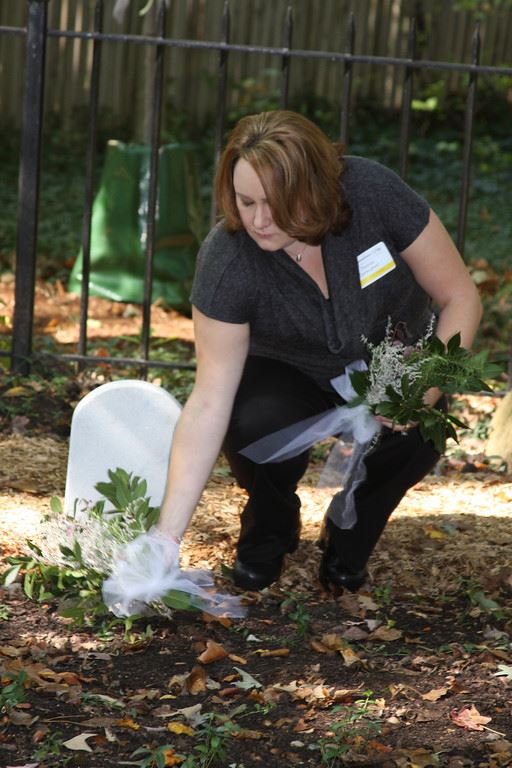 In 2011, Jones family descendants were joined by Town representatives, Friends of the Page-Walker Hotel, Cary Historical Society members, Maynard Oaks residents and Daughters of the American Revolution to celebrate the conservation of the White Plains Cemetery. They laid bouquets of white flowers on each of the graves to honor their ancestors. Watch a video slideshow of the ceremony.
In 2011, Jones family descendants were joined by Town representatives, Friends of the Page-Walker Hotel, Cary Historical Society members, Maynard Oaks residents and Daughters of the American Revolution to celebrate the conservation of the White Plains Cemetery. They laid bouquets of white flowers on each of the graves to honor their ancestors. Watch a video slideshow of the ceremony.
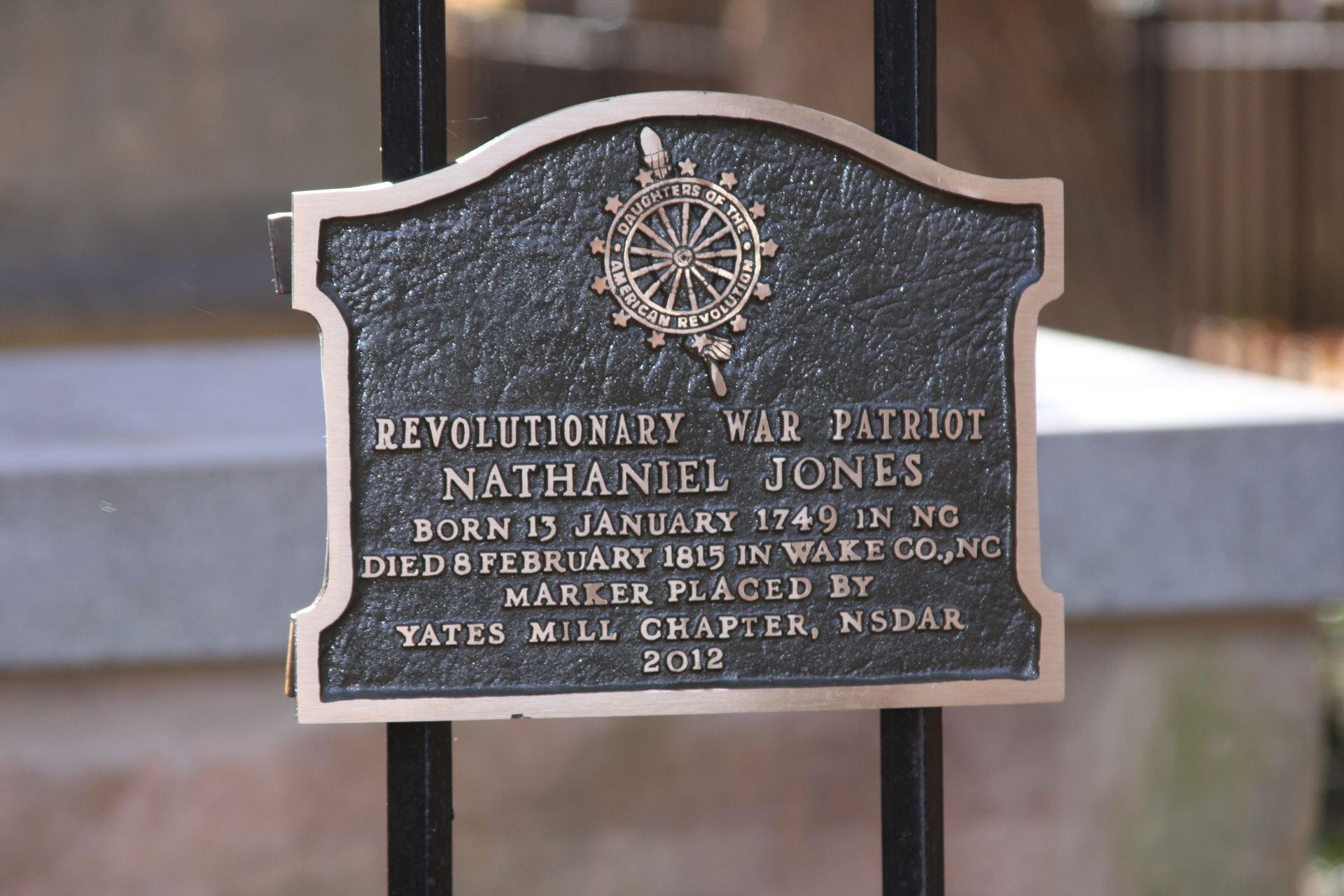 In 2012, the Yates Mill Chapter of the National Society of the Daughters of the American Revolution held a commemorative grave marking ceremony and mounted on the gate leading into the graveyard a bronze plaque in honor of Nathaniel Jones. This plaque honors Jones' service as a Patriot during the American Revolution.
In 2012, the Yates Mill Chapter of the National Society of the Daughters of the American Revolution held a commemorative grave marking ceremony and mounted on the gate leading into the graveyard a bronze plaque in honor of Nathaniel Jones. This plaque honors Jones' service as a Patriot during the American Revolution.
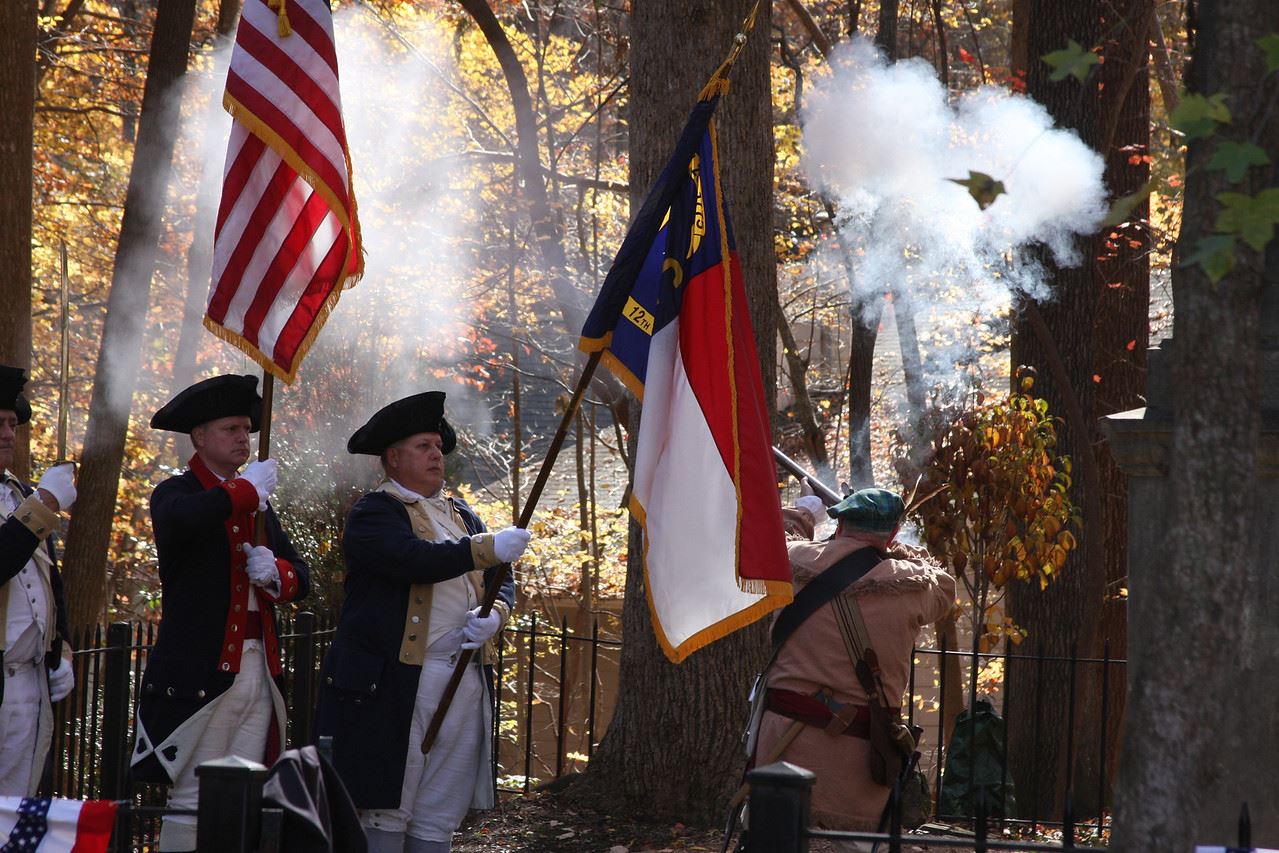
Forty-six years after the descendants of Nathaniel Jones trekked through the woods to find their ancestors' cemetery in a state of disrepair, the fully conserved cemetery became an official Cary Historic Landmark in 2017. The Town of Cary designates Cary Historic Landmarks as a way to preserve buildings and sites that are historically, architecturally, or culturally significant to our community. The White Plains Cemetery is certainly that.
You can visit the White Plains Cemetery at 100 Tolliver Ct. in Cary.
Watch for More Posts and a Livestream Visit to the White Plains Cemetery
This month we're trying something new and are bringing you weekly posts with more information about Nathaniel Jones and his family and about the cemetery in which they are laid to rest. And we're going to take you to the White Plains Cemetery via live streaming on our
Facebook page. Follow along in this blog during September as we present new information about Nathaniel Jones, and tune in to accompany us on a visit to this Cary historic landmark on September 14 at 6:00 p.m.
